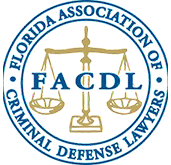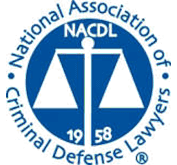Common Types of Forensic Evidence in Criminal Cases
Criminal courts refer to scientific evidence as forensic evidence. This type of evidence is used by both criminal prosecutors and defense attorneys and might be an issue in many criminal cases, including murder, sexual assaults, DUIs, robberies, and others. However, forensic evidence is not always reliable, and unreliable evidence should not be admitted at trial.
The following types of forensic evidence are commonly used in criminal cases:
- Fingerprint identification
- Hair follicle evidence
- Fiber evidence
- DNA matching
- Ballistic evidence
- Gas chromatography/mass spectroscopy (GC/MS) analysis
- Breathalyzer tests
- Computer forensic analysis
In some cases, the prosecution might try to introduce new forms of forensic evidence that has not been rigorously tested by the scientific community or recognized as reliable. Even some types of evidence that might be broadly accepted for its value, including fingerprints, can be challenged when they are analyzed incorrectly.
Fingerprint Matching Problems
Since each person’s fingerprints are unique, they have long been used to identify suspects in criminal cases. However, fingerprint identifications can be faulty, and errors can arise because of the following issues:
- Human errors made with visual matching
- Expert bias based on contextual information
- AFIS matching errors – false positives and false negatives
- Aged fingerprints
- Lack of standards for the number of points and ridges
- Lack of security for fingerprint evidence
There have been some infamous fingerprint identification mistakes in the past. For example, Brandon Mayfield was erroneously identified as the Madrid bomber based on an inaccurate fingerprint identification and wrongfully detained and subsequently released with an apology two weeks later. Mayfield was never in Spain and could not have committed the crime of which he was accused. His case demonstrates the importance of challenging fingerprint evidence even though it is widely accepted.
DNA Matching Problems
DNA analysis might include the analysis of biological evidence left behind at crime scenes. Like fingerprints, all people have unique DNA profiles other than identical twins. While DNA analysis can be highly accurate, problems can be introduced by lab analysts whose analyses are not conducted to scientific standards, raising the possibility of human error.
Hair and Fiber Evidence Issues
Analysis of hair left behind at the scene of a crime has been introduced in many criminal cases. Hair evidence is typically used to exclude people as suspects, but there are some cases in which hairs without follicles might be used to show similarities to a suspect’s hair. For example, Kirk Odom was convicted of rape in 1980 based on alleged similarities between his hair and some hair that was left behind at the crime scene. He was exonerated in 2012 when DNA testing showed that semen on a pillow excluded him as the perpetrator.
Fiber evidence might include fibers from curtains, clothing, fabric, upholstery, or carpet and might be manufactured, natural, or synthetic. Fiber evidence might be used to identify the source of the fiber. However, fabrics are typically mass-produced, bringing the value of fiber evidence into question.
Ballistic Evidence Problems
Trials for gun crimes often include testimony by ballistics experts about the type of weapon, the location of the shooter, the trajectory of the bullet, and the rifling or marks left behind on the bullet. While ballistics evidence might influence a jury, the field of ballistics is flawed and not backed by scientific principles.
Lab Errors
GC/MS in the lab is used to analyze chemicals in the blood to identify substances. However, lab analysts are not infallible. There have been multiple cases of faulty lab analysis leading to the dismissal of cases and withdrawal of convictions. For example, numerous DUI cases were dismissed in Colorado in 2012 because of errors made by lab analysts at the Colorado Department of Health and Environment.
Forensic Evidence in Criminal Trials
One reason it is important to challenge forensic evidence in criminal cases is that it tends to be accepted without question by juries. Defense lawyers should carefully examine any scientific evidence on which the prosecution intends to rely and work with experts to evaluate potential errors in how the evidence was collected or analyzed.
Defense attorneys can file motions to challenge the admissibility of forensic evidence. If evidence is found to be unreliable, the court should order it inadmissible. This would mean that the prosecutor could not present it at trial to prove the defendant’s guilt.
Florida courts follow what is known as the Daubert standard for evaluating scientific experts and evidence. This standard arose out of Daubert v. Merrell Dow Pharmaceuticals, 509 U.S. 579 (1993) and was established by the U.S. Supreme Court. While the Daubert standard is a federal standard, Florida has adopted it to use in state court cases.
According to the decision, judges must act as gatekeepers of scientific evidence to determine whether it has enough weight and merit to be presented to a jury. They must ensure that scientific evidence is both relevant and reliable and that it is grounded in the scientific method. A Daubert motion seeks to have unreliable evidence excluded at trial. The judge considers the following factors:
- Whether the scientific evidence and expert’s theory have been objectively tested or could be tested under scientific principles,
- Whether the theory or technique has been published in a peer-reviewed scientific publication
- The theory or technique’s error rate
- Whether standards and controls existed and were followed
- Whether the theory or technique has general acceptance within the scientific community
Consult a Saint Lucie Scientific Evidence Lawyer
If you have been charged with a crime and believe the prosecution and police will rely on forensic evidence, you should consult an experienced St. Lucie criminal lawyer at the law firm of Jeffrey H. Garland, P.A. Attorney Garland has decades of legal experience and a strong scientific background. Contact us today at (772) 489-2200 to request a consultation.






